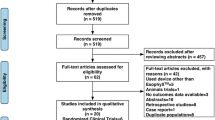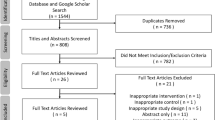Abstract
Background
Transoral incisionless fundoplication (TIF) has been used for treating chronic gastroesophageal reflux disease (GERD) refractory to medical therapy. We aim to investigate the complications associated with TIF using a national database.
Methods
We analyzed post-marketing surveillance data from the FDA Manufacturer and User Facility Device Experience (MAUDE) database from Jan 2011 through Jan 2021.
Results
During the study period, approximately 95 event cases reported to the FDA. Approximately 131 patient complications were identified. The number of adverse events declined from 2011 to 2016 (R2 = 0.96) but increased from 2016 to 2020 (R2 = 0.99). The most common adverse event was perforation (19.8%), followed by laceration 17.6%, bleeding (9.2%), and pleural effusion (9.2%). The most common patient complications were treated using endoscopic clips (12.3%), chest tube or drain insertion (12.3%), use of endoscopic retriever device (11.1%), esophageal stent (8.6%), and emergent or open surgery (11.1%).
Conclusions
Adverse events from TIF range from mild to severe. Further research is needed to develop approaches aimed at reducing patient risks.
Similar content being viewed by others
References
Yamasaki T, Hemond C, Eisa M, Ganocy S, Fass R (2018) The changing epidemiology of gastroesophageal reflux disease: are patients getting younger? J Neurogastroenterol Motil 24:559–569
Trad KS, Turgeon DG, Deljkich E (2012) Long-term outcomes after transoral incisionless fundoplication in patients with GERD and LPR symptoms. Surg Endosc 26:650–660
Witteman B, Conchillo J, Rinsma N et al (2015) Randomized controlled trial of transoral incisionless fundoplication vs. proton pump inhibitors for treatment of gastroesophageal reflux disease. Am J Gastroenterol 110:531–542
Triadafilopoulos G, Clarke JO, Hawn M (2017) Precision GERD management for the 21st century. Dis Esoph 30:1–6
Frazzoni M, Piccoli M, Conigliaro R, Frazzoni L, Melotti G (2014) Laparoscopic fundoplication for gastroesophageal reflux disease. World J Gastroenterol 20:14272–14279
Cadière GB, Buset M, Muls V et al (2008) Antireflux transoral incisionless fundoplication using EsophyX: 12-month results of a prospective multicenter study. World J Surg 32:1676–1688
Testoni PA, Testoni S, Distefano G, Mazzoleni G, Fanti L, Passaretti S (2019) Transoral incisionless fundoplication with EsophyX for gastroesophageal reflux disease: clinical efficacy is maintained up to 10 years. Endosc Int Open 7:E647–E654
Huang X, Chen S, Zhao H et al (2017) Efficacy of transoral incisionless fundoplication (TIF) for the treatment of GERD: a systematic review with meta-analysis. Surg Endosc 31:1032–1044
Chang K, Bell R (2020) Transoral incisionless fundoplication. Gastrointest Endosc Clin N Am 30:267–289
Hoppo T, Immanuel A, Schuchert M et al (2010) Transoral incisionless fundoplication 2.0 procedure using EsophyXTM for gastroesophageal reflux disease. J Gastrointest Surg 14:1895–1901
Agostoni M, Boemo C (2010) Bilateral pneumothorax during transoral incisionless fundoplication. Eur J Anaesthesiol 27:216–217
Narsule CK, Burch MA, Ebright MI et al (2012) Endoscopic fundoplication for the treatment of gastroesophageal reflux disease: initial experience. J Thorac Cardiovasc Surg 143:228–234
Muls V, Eckardt AJ, Marchese M et al (2013) Three-year results of a multicenter prospective study of transoral incisionless fundoplication. Surg Innov 20:321–330
Stefanidis G, Viazis N, Kotsikoros N et al (2017) Long-term benefit of transoral incisionless fundoplication using the esophyx device for the management of gastroesophageal reflux disease responsive to medical therapy. Dis Esophagus 30:1–8
Funding
None.
Author information
Authors and Affiliations
Corresponding author
Ethics declarations
Disclosures
Drs. Daryl Ramai, Alexandra Shapiro, Mohamed Barakat, Antonio Facciorusso, Adriane Dull, Saurabh Chandan, and Douglas G. Adler have no conflicts of interest or financial ties to disclose.
Additional information
Publisher's Note
Springer Nature remains neutral with regard to jurisdictional claims in published maps and institutional affiliations.
Rights and permissions
About this article
Cite this article
Ramai, D., Shapiro, A., Barakat, M. et al. Adverse events associated with transoral incisionless fundoplication (TIF) for chronic gastroesophageal reflux disease: a MAUDE database analysis. Surg Endosc 36, 4956–4959 (2022). https://doi.org/10.1007/s00464-021-08851-x
Received:
Accepted:
Published:
Issue Date:
DOI: https://doi.org/10.1007/s00464-021-08851-x




